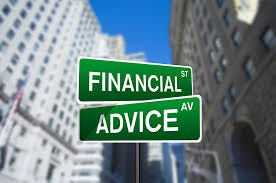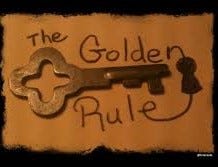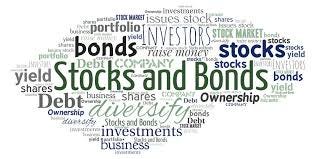Fidelity Investing Advice for Everyone

Whatever your level of experience with money, it is always good to get back to the brass tacks once in awhile.
That’s a reference to the strip that goes down on the concrete, before laying the carpet, for all of you white collar workers out there.
No matter if you have a hard time saving or if you already have a decent nest egg, you better take an interest in your money working the hardest and making the most for you.
The worst mistake to make with money is letting it sit idle and unemployed. While there is something to be said about the safety in keeping a certain sum tucked away, in a safe or in the form of bullion, I don’t want to get lost in that argument. With that, take two percent post-tax and hide it.
Let’s move on.
I am in no way a representative for Fidelity but I have become an advocate. I’ve found Fidelity to offer the most comprehensive structure for growing finances available. I can say that because I have tried nearly every platform out there. Etrade, Robinhood, Stash, Chime, Numerous Bank branches…
I trade stock, keep a 401k through my employer, max out my Roth IRA, and utilize Fidelity’s cash management account.
These four things, I’ve found through many years of trial and error, to be the perfect marriage for keeping your money in a state of constant growth. It works well, because you can fertilize, so to speak, your investments to your liking.
Let me elaborate and try and sway you into being smart with your money in a very simple kind of way.
If you are just starting out, and are interested in trading stock and things of that nature, be smart and get yourself a structure that will allow that first.
If your company doesn’t offer a 401k or a pension, I highly suggest searching for a company that does. Self-employed? Even better! Set up a solo 401k and match yourself.
My advice? Do it through Fidelity. If your company does their 401k through another financial institution, see if that institution offers Roth IRA, Individual Trading, and money management options. If so, maybe you should consolidate all of your accounts into that one institution. The key to constant growth is accessibility, simplicity, and structure.

The tree of finance’s structure is four tiered.
The top tier is the 401k.
Your 401k is where you push the largest sum possible to savings. It is only accessible through loans, and even then, only to fifty percent of your vested balance. Also, it’s pre-taxed and employers often match your contributions, so put as much as you can into it per paycheck.
A 401k offers buy-ins to portfolios containing multiple stocks depending on what you choose. It differs from an IRA (your next tier) in such that it doesn’t offer you the flexibility of buying individual stocks. However, you can still log-in and look at the performance metrics of the offered portfolios and restructure your own portfolio of ETF’s (collection of portfolios) to better suit your growth goals.
In other words: You can log-in and look at how your 401k choices are doing and change the options to better performing ones with a few clicks of the mouse. This you should do a few times a year.
The hardest part of the 401k is the first ten thousand dollars. Set that goal and push hard to make it as fast as possible. When you reach it, things will get a bit easier.
The next tier down is the ROTH IRA.
The ROTH IRA may be the most beautiful form of investment available. The only bummer is that you can only contribute six thousand dollars to it per year!
I know that sounds like a lot of money to some of you. If it does, then you really need to focus on tier one this year! Take my advice and contribute at least twenty percent of your income into your 401k.
It sounds like a lot of money to put out of reach right now, but let me take a second and appeal to your logical side.
There is a golden rule that says,
“Pay yourself first.”

Everyone has heard it, few know what it means.
You work hard. Every hour you work, you trade your life for dollars. Those dollars you in-turn trade for things, or, time with loved ones. When you spend those dollars, they are gone forever. Your life- is gone forever.
Your 401k is: your life, worked (past tense). The money in your 401k is constantly making money little by little, and lots by lots when it gets bigger.
The money in your 401k is essentially, the worker that you’ve been, becoming, the worker that you are.
Your 401k is your guarantee that you are not giving your years away to everyone but yourself.
If you give someone some money, give yourself twice that. You’ve earned it.
Enough said.
Warren Buffet knows this rule well, and it was taught to the rich since currency came into existence. Read the richest man in Babylon and see for yourself!
But back to tier two, the ROTH IRA.
Your ROTH IRA gives you the flexibility to withdraw what you contribute without a penalty. As long as you don’t withdraw any of the earnings, that is. Also, you can invest the money that is in the ROTH IRA into whatever stocks you choose. If you prefer to keep your money in AMAZON or GOOGLE, you can do that!
Whatever companies you feel are growing fast, you can put your money there.
Fidelity even lets you buy partial shares, so you can invest whatever amount you want into those companies without having to wait until you have thousands in the account. So you can start your money growing right away.
This means larger returns than an average savings account, even if you are minimally vigilant or just getting to know the ropes of trading.
I suggest keeping money invested in large safe companies in the ROTH IRA. Berkshire Hathaway, Google, Amazon, etc. An investor once told me that he likes things that everyone always needs, like toothpaste. I think we’ve all seen the demand for toilet paper.
Your ROTH IRA is a great well of money you can use to pay back any loans you take from your 401k. When you take your contributions out from this account you will be left with all of the capital gains.
So always contribute the maximum amount each year!
On top of the flexibility and great interest rates of a ROTH, you also get a tax credit for one thousand dollars at the end of the year called a Saver’s credit just for contributing to it!

The third tier is what I call the Small Capitalization account.
This account is an individual stock account that you keep all of the money you don’t need to be liquid-able day-to-day. A small note should be placed here on liquid and non-liquid assets for the beginner.
Liquid assets are like the cash in your wallet. The dinero on you debit card. Anything that can be accessed straight away. For example, money you may need for gas, food, and other odds and ends. I’m going to say four days worth of living expenses is enough to have in a checking or cash management account (your next tier) at any one time.
Because, what is in your checking account is only gaining a small percentage. And some checking accounts don’t pay interest at all, or worse, charge you! So beware of that.
I am not going to include credit cards in liquid assets. Though, if you are super smart, you can keep all of your money invested and pay down your credit cards from your Small Capitalization account before they become due. But, that is a technique, that, if you’ve gotten all of this so far, you probably already know!
Non-liquid assets are things like your equity, you car (cuz you’d have to pawn it or sell it to use the money), your 401k (cuz you have to wait for processing before you get the money out, and your stocks (because you have to wait for market open to sell them, and then wait three days for the funds to settle).
The Small Capitalization tier is exactly what it describes, your place to make the most out of your money. Capitalize.
In the Small Cap account you should invest in what you like and feel is trending.
If you like Nike, invest. If you like Starbucks, invest. The key to managing a Small Cap account is in never selling at a loss, or at least not selling frequently at a loss.
The win comes from managing the timing.
Your money here is invested in your likes, so it can feel trendy at times, and it can be tempting to hold onto stuff you like when it goes over twenty percent. But, using your intuition, it can be wise to close positions when they top twenty percent and take the capital gain. Then in a few days or weeks, if you’re still loving that trend, get back in. If you stay with something long enough, then think of making it a part of your ROTH IRA.
It’s your world, so invest your way.
The key is not to let your money sit. When it does sit, let it sit in a cash management account that draws interest or in bonds (which are another story in themselves). Though I advise keeping bonds a small part of your 401k.
The fourth tier is your Cash Management or Checking Account.
This is where you will keep your liquid assets, if you’re not playing the credit card game. Which, by the way, you should pay down to zero balances. Why?
There is no sense in paying twenty two percent interest on credit card balances while you’re making less than twenty percent gains in your Small Cap account.
But, that being said, if you are in over your head in debt and trying to start out here with investing, don’t bypass the golden rule.
Pay yourself first.
Make deals with your creditors to pay them back with a percentage each check, but pay yourself first!
Once you get that 401k over ten thousand then you can think about using funds from your ROTH IRA or 401k loans to pay those creditors down, too. Always pay yourself first. No one deserves it more!
Fidelity offers all four types of accounts and makes them accessible in one place on-line. In my experience, they offer a simple and profitable platform for even the newest investors to pursue the American dream.
Financial freedom does not discriminate. Every American has the ability and right to put themselves first when it comes to earning a living.
Jay Horne is an author and publisher out of Bradenton, Florida who has shared a genuine interest in philosophy and writing since early childhood. He is a husband and father of four. Jay enjoys writing fiction, humor, horror, and teen & young adult.
View all of his professional and philosophical works of literature on his Amazon author page where you will find blogs, videos, and free excerpts:
Jay M Horne
Jay M Horne
Comments
Post a Comment